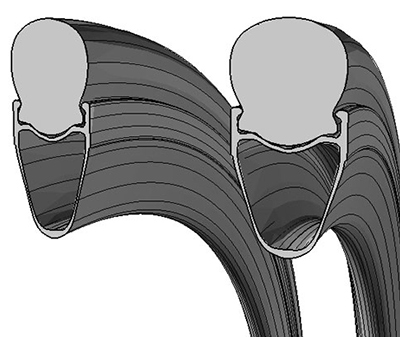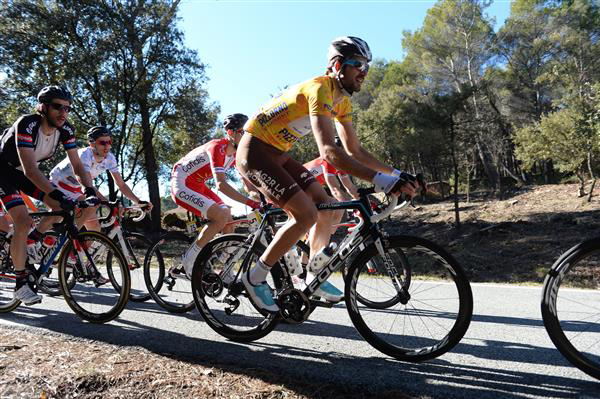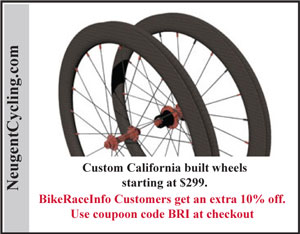

Wider Road Rims Explained
by John Nugent
Back to Cycling Tech index page
John Neugent, owner of Neugent Cycling sent me this essay explaining the trend towards wider rims and why it represents an improvement in the state of the art.
I've known Mr. Neugent for decades. He has worked at every level of the bicycle business, retail, wholesale and manufacturing, and is truly one of the most knowledgable people in the bicycle trade. He's also a genuinely good guy.
Please, give his site a visit, you'll be glad you did.

John Neugent

Bill and Carol McGann's book The Story of the Giro d'Italia, A Year-by-Year History of the Tour of Italy, Vol 1: 1909 - 1970 is available as an audiobook here. For the print and Kindle eBook versions, just click on the Amazon link on the right.
John Neugent writes:
Wider Rims
Many of you are aware of the trend toward wider road rims. Some Zipp, Enve, and Hed rims are now as wide as 28 mm. In the past most were about 19 mm.
I first heard about wider rims when Team Highroads was breaking up. The owner, Bob Stapleton is a local San Luis Obispo, California resident and was selling off the team bikes. All of the bikes were equipped with tubular wheels so most of the people who bought them needed clinchers. Bob told everyone to come and see me and have wheels built up with HED rims (the first wider rim maker) because everyone on the team swore by them.

Wider rims and tires
It took me about a year to finally get wider rims made in Taiwan. I was getting as many Hed alloy rims as I could but they were selling faster than I could get them.
The claims are lower rolling resistance, better aerodynamics, a more comfortable ride, and better handling. Most are the result of the increased air volume due to the wider base. A typical 23 mm tire/tube on a 19 mm rim holds about 720,000 cubic mm of air. That same tire/tube on a 24 mm rim holds about 915,000 cubic mm’s of air – or an increase of 27%.
With that increase in air volume you can run lower pressures without a risk of a pinch flat. The lower pressures also allow the tire sidewall to flex more and generally let you roll over bumps rather than bounce over them (the reason for lower rolling resistance). The lower air pressures also make the ride more comfortable.

2015 Tour du Haut Var winner Ben Gastauer stage racing with modern wider rims
Two other things happen with lower tire pressures on wider based tires. Because the tire pressure is lower, you have a bigger tire patch – more rubber on the road – increasing handling and cornering – and because the base of the tire is wider, the contact patch is wider and not as long – giving you better cornering.
Most of the pros are now moving to 23’s or 25 mm tires as they favor more air volume for all of the same reasons.
The better news is that there are no downsides to wider rims so you give up nothing.
John Neugent was was one of the first to establish quality hand building in Taiwan around the turn of the century. He now owns Neugent Cycling, a firm devoted to delivering world-class equipment at the lowest possible price.








